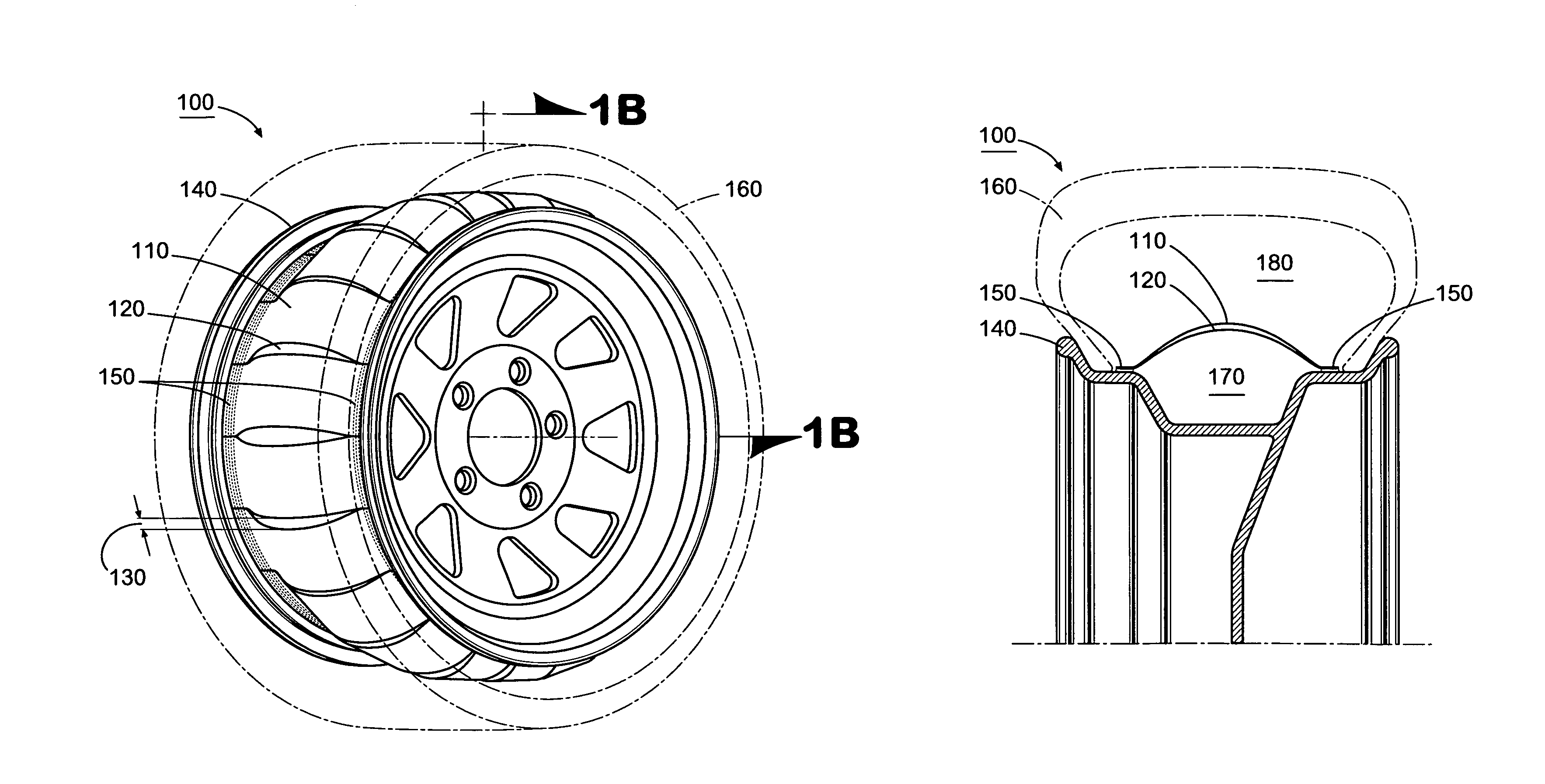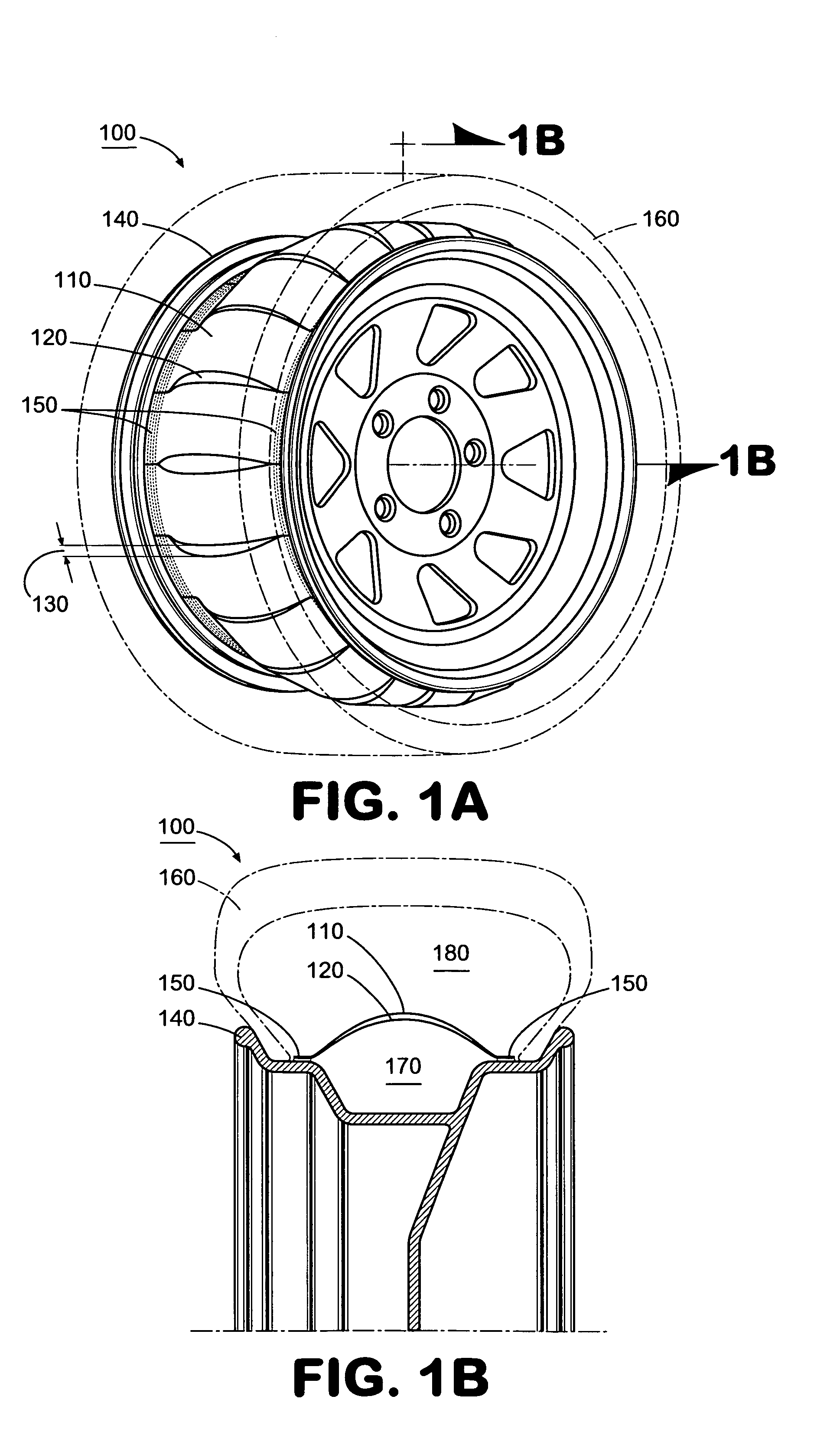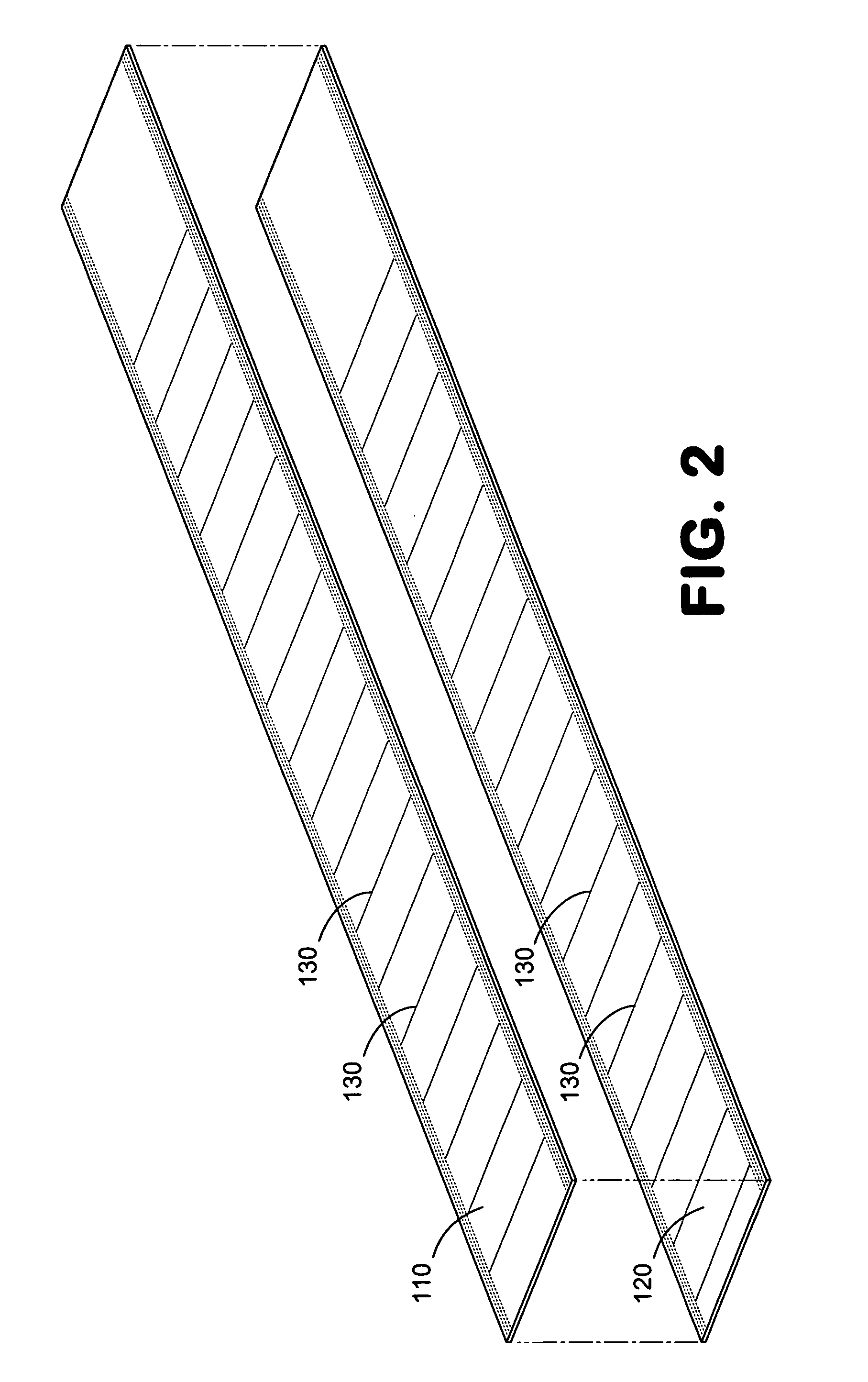Tire and wheel noise reducing device and system
a technology of noise reduction device and noise reduction device, which is applied in the field of vehicle noise reduction, can solve problems such as attenuation of sound, and achieve the effects of reducing tire noise, reducing low-frequency energy, and dampening pressure flows
- Summary
- Abstract
- Description
- Claims
- Application Information
AI Technical Summary
Benefits of technology
Problems solved by technology
Method used
Image
Examples
Embodiment Construction
[0036]Exemplary embodiments will be described with reference to FIGS. 1-13 in which the same reference numerals represent similar elements.
[0037]FIG. 1A is a perspective view illustrating a tire noise absorbing system 100 comprising a flow-resistant barrier disposed on a wheel 140 for a tire 160 according to an exemplary embodiment. FIG. 1B is a cross-sectional view of the exemplary system 100 illustrated in FIG. 1A. As shown in FIGS. 1A and 1B, the system 100 comprises multiple, overlapped layers 110, 120 of material, which form an acoustic flow-resistant barrier. The layer 110 comprises an outer layer with reference to the wheel 140, and the layer 120 comprises an inner layer with reference to the wheel 140. The overlapping layers 110, 120 are coupled to the wheel 140 along their edges at location 150 to form loops of overlapped material. In other words, the layers 110, 120 are wrapped around the wheel 140 and coupled to both sides of the wheel 140 at locations 150. The location 1...
PUM
 Login to View More
Login to View More Abstract
Description
Claims
Application Information
 Login to View More
Login to View More - R&D
- Intellectual Property
- Life Sciences
- Materials
- Tech Scout
- Unparalleled Data Quality
- Higher Quality Content
- 60% Fewer Hallucinations
Browse by: Latest US Patents, China's latest patents, Technical Efficacy Thesaurus, Application Domain, Technology Topic, Popular Technical Reports.
© 2025 PatSnap. All rights reserved.Legal|Privacy policy|Modern Slavery Act Transparency Statement|Sitemap|About US| Contact US: help@patsnap.com



